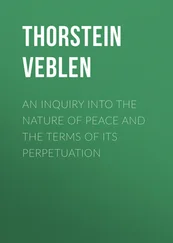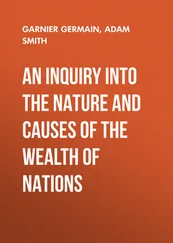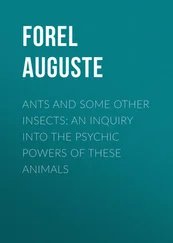Robert Pirsig - Lila. An Inquiry Into Morals
Здесь есть возможность читать онлайн «Robert Pirsig - Lila. An Inquiry Into Morals» весь текст электронной книги совершенно бесплатно (целиком полную версию без сокращений). В некоторых случаях можно слушать аудио, скачать через торрент в формате fb2 и присутствует краткое содержание. Жанр: Современная проза, на английском языке. Описание произведения, (предисловие) а так же отзывы посетителей доступны на портале библиотеки ЛибКат.
- Название:Lila. An Inquiry Into Morals
- Автор:
- Жанр:
- Год:неизвестен
- ISBN:нет данных
- Рейтинг книги:3 / 5. Голосов: 1
-
Избранное:Добавить в избранное
- Отзывы:
-
Ваша оценка:
- 60
- 1
- 2
- 3
- 4
- 5
Lila. An Inquiry Into Morals: краткое содержание, описание и аннотация
Предлагаем к чтению аннотацию, описание, краткое содержание или предисловие (зависит от того, что написал сам автор книги «Lila. An Inquiry Into Morals»). Если вы не нашли необходимую информацию о книге — напишите в комментариях, мы постараемся отыскать её.
Lila. An Inquiry Into Morals — читать онлайн бесплатно полную книгу (весь текст) целиком
Ниже представлен текст книги, разбитый по страницам. Система сохранения места последней прочитанной страницы, позволяет с удобством читать онлайн бесплатно книгу «Lila. An Inquiry Into Morals», без необходимости каждый раз заново искать на чём Вы остановились. Поставьте закладку, и сможете в любой момент перейти на страницу, на которой закончили чтение.
Интервал:
Закладка:
Whacko science. They were trying to lift themselves by their bootstraps. You can’t have Box A contain within itself Box B , which in turn contains Box A . That’s whacko. Yet here’s a science which contains man which contains science which contains man which contains science — on and on.
He left the mountains near Bozeman with boxes full of slips and many notebooks full of quotations and the feeling that there was nothing within anthropology he could do.
Back down in the plains, in a country motel one night with nothing to read, Phædrus had found a small dog-eared Yankee magazine, thumbed through it, and stopped on a brief account by Cathie Slater Spence entitled In Search of the April Fool.
It was about a child prodigy who had possibly the highest intelligence ever observed, and who in his later life went nowhere. Born on April 1, 1898, it said, William James Sidis could speak five languages and read Plato in the original Greek by the age of five. At eight he passed the entrance for Harvard but had to wait three years to be admitted. Even so he became Harvard’s youngest scholar and graduated cum Jaude in 1914 at the age of sixteen. Frequently featured in Ripley’s Believe It or Not, Sidis made the front page of The New York Times nineteen times.
But after graduating from Harvard, the Boy Wonder pursued his own obscure and seemingly meaningless interests. The press that had lionized him turned on him. The most scathing example came in the New Yorker in 1937. Entitled April Fool, the magazine article ridiculed everything from Sidis’s hobbies to his physical characteristics. Sidis sued for libel and invasion of privacy. Though he won a small out-of-court settlement for libel, the invasion of privacy charge was dismissed by the U.S. Supreme Court in a landmark decision. The article is merciless in its dissection of intimate details of its subject’s personal life, the court conceded, but Sidis was a public figure and thus could not claim protection from the interest of the press, which continued to hound him until his death in 1944. Obituaries called him a prodigious failure and a burnt-out genius who had never achieved anything of significance despite his talents.
Dan Mahony of Ipswich, Massachusetts, read about Sidis in 1976 and was puzzled. What was he really doing and thinking all that time? Mahony wondered. It’s true he held low-paying jobs, but Einstein came up with the theory of relativity while working in a patent office. I had a feeling Sidis was up to more than most people thought.
Mahony has spent the last ten years looking into Sidis’s work. In one dusty attic, he found a bulky manuscript called The Tribes and the States in which Sidis argues persuasively that the New England political system was profoundly influenced by the democratic federation of the Penacook Indians.
At this sentence, a kind of shock passed through Phædrus, but the article went on.
When Mahony sent Sidis’s book The Animate and Inanimate to another eccentric genius, Buckminster Fuller, Fuller found it a fine cosmological piece that astoundingly predicted the existence of black holes — in 1925!
Mahony has unearthed a science fiction novel, economic and political writings, and eighty-nine weekly newspaper columns about Boston that Sidis wrote under a pen name. The amazing thing is that we may only have tapped the surface of what Sidis produced, says Mahony. For instance, we’ve found just one page of a manuscript called The Peace Paths, and people who knew Sidis have said they saw many more manuscripts. I think Sidis may still have a few surprises in store for us.
Phædrus set down the magazine and felt as though someone had thrown a rock through the motel window. Then he read the article over and over again in a sort of daze, as the impact of what he was reading sank deeper and deeper. That night he could hardly sleep.
It looked as though way back in the thirties Sidis had been on exactly the same thesis about Indians. He was trying to tell people some of the most important things that could be said about their country and they were rewarding him by publicly calling him a fool and failing to publish what he had written. There didn’t even seem to be any way to find out what Sidis had said.
Phædrus tried to contact the Mahony mentioned in the article but couldn’t find him, partly, he supposed, because his effort was only half-hearted. He knew that even if he did get a look at Sidis’s material there wasn’t much he could do about it. The problem wasn’t that it wasn’t true. The problem was that nobody was interested.
5
It felt cold again and Phædrus got up and reloaded the coal stove with more charcoal briquets.
After that depressing experience in the mountains he had wanted to give the whole thing up and move on to something more profitable, but as it turned out, the depression he was feeling was just a temporary setback. It was a prelude to a much larger and more important explanation of the Indians. This time it would not be just Indians versus whites, treated within a white anthropological format. It would be whites and white anthropology versus Indians and Indian anthropology treated within a format no one had ever heard of yet. He would get out of the impasse by expanding the format.
The key was values, he thought. That was the weakest spot in the whole wall of cultural immunity to new ideas the anthropologists had built around themselves. Value was a term they had to use, but under Boas' science value does not really exist.
And Phædrus knew something about values. Before he had gone up into the mountains he had written a whole book on values. Quality. Quality was value. They were the same thing. Not only were values the weakest spot in that wall, he might just be the strongest person to attack that spot.
He found surprising support for this attack from one of Boas' students, Alfred Kroeber, who with Harvard anthropology professor, Clyde Kluckhohn, had led a drive for the reinsertion of values into anthropology. Elsewhere Kluckhohn had said, Values provide the only basis for fully intelligible comprehension of culture because the actual organization of all cultures is primarily in terms of their values. This becomes apparent as soon as one attempts to present the picture of a culture without reference to its values. The account becomes a meaningless assemblage of items having relationship to one another only through coexistence in locality and moment — an assemblage that might as profitably be arranged alphabetically as in any other order; a mere laundry list.
Kluckhohn conceded that, The degree to which even lip-service to values has been avoided until recently, especially by anthropologists, is striking. The hesitation of anthropologists can perhaps be laid to the natural history tradition which persists in our science for better or worse. But in Culture: a Critical Review of Concepts and Definitions they said that, culture must include the explicit and systematic study of values and value-systems viewed as observable, describable, and comparable phenomena of nature.
They explained that negativism toward the use of values resulted from attitudes of objectivity. It was the same objectivity, Phædrus noted, that Dusenberry had so much trouble with. It is this subjective side of values that led to their being long tabooed as improper for consideration by natural science, Kroeber and Kluckhohn said. Instead [values] were relegated to a special set of intellectual activities called "the humanities" included in the "spiritual science" of the Germans. Values were believed to be eternal because they were God-given, or divinely inspired or at least discovered by that soul part of man which partakes somewhat of divinity, as his body and other bodies and tangibles of the world do not. A new and struggling science, as little advanced beyond physics, astronomy, anatomy and the rudiments of physiology as Western science was only two centuries ago, might cheerfully concede this reservation of the remote and unexpected territory of values to the philosophers and theologians and limit itself to what it could treat mechanistically.
Читать дальшеИнтервал:
Закладка:
Похожие книги на «Lila. An Inquiry Into Morals»
Представляем Вашему вниманию похожие книги на «Lila. An Inquiry Into Morals» списком для выбора. Мы отобрали схожую по названию и смыслу литературу в надежде предоставить читателям больше вариантов отыскать новые, интересные, ещё непрочитанные произведения.
Обсуждение, отзывы о книге «Lila. An Inquiry Into Morals» и просто собственные мнения читателей. Оставьте ваши комментарии, напишите, что Вы думаете о произведении, его смысле или главных героях. Укажите что конкретно понравилось, а что нет, и почему Вы так считаете.











